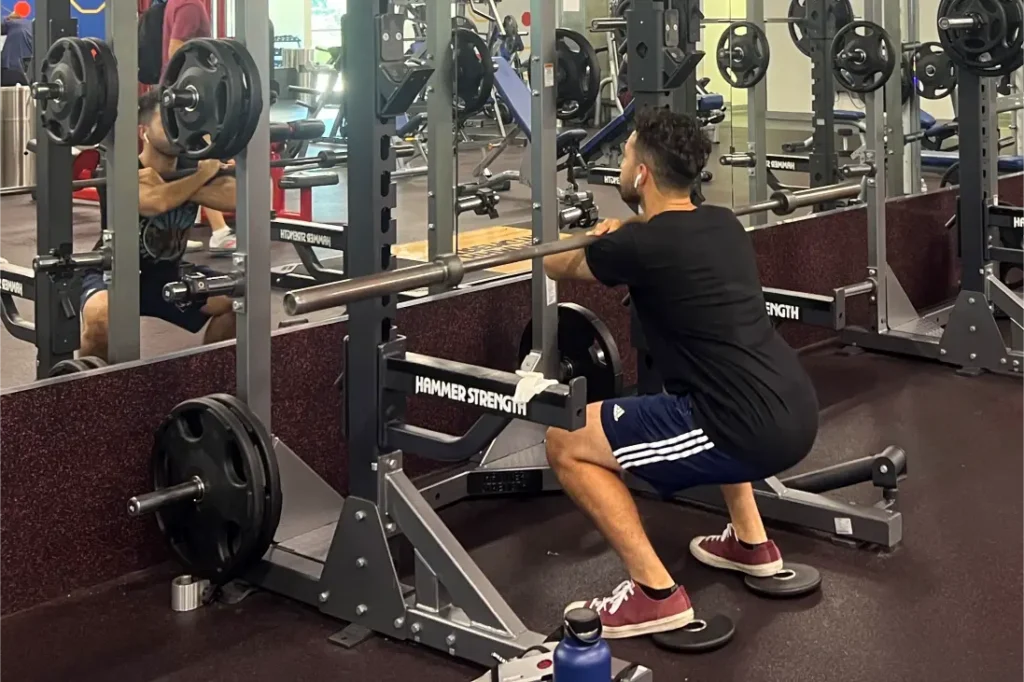When you’re a beginner just setting foot in the gym, understanding the foundational aspects of weight lifting can transform your efforts from merely lifting weights to elevating your entire fitness journey. This guide delves into common weightlifting mistakes and provides actionable advice on how to start correctly, ensuring your workouts are not only effective but also safe.
Common mistakes in weightlifting
When it comes to weightlifting, enthusiasm can sometimes lead to errors that hamper progress and increase the risk of injury. Here’s what you need to watch out for:
- Incorrect form: This is perhaps the most significant error beginners make. Proper form is crucial for targeting the right muscle groups and avoiding injuries. Incorrect form often comes from lifting weights that are too heavy, leading to compensating movements that stray from the intended muscle work. If you need assistance from a personal trainer in Concord, make sure to visit HiTone Fitness.
- Ignoring warm-ups: Jumping straight into heavy lifting without a proper warm-up is a recipe for injury. Warm-ups increase blood flow to muscles, enhance flexibility, and reduce the risk of strains or tears. A good warm-up should lightly work the muscles you intend to train in your session.
- Overloading too quickly: While progression is a key aspect of any fitness regimen, increasing weights too rapidly can overwhelm your body, leading to poor form and even injury. It’s essential to build strength gradually to accommodate higher weights responsibly.
- Neglecting full range of motion: Using a full range of motion helps in maximizing muscle growth and flexibility. Some lifters, especially when using weights that are too heavy, tend to shorten their movements, which limits the effectiveness of their exercise.
- Skipping rest days: Recovery is just as important as the workout itself. Muscles need time to repair and strengthen, and without rest, you’re likely to experience fatigue, decreased performance, and increased injury risk.
Starting weight lifting the right way
Here are key steps to ensure you start correctly:
- Mastering the form: Before you even think about adding more weight, focus on mastering the correct form for each exercise. Consider working with a trainer who can provide immediate feedback and corrections. This investment in your technique will pay dividends in terms of efficiency and safety.
- Developing a routine: Structure is key in any fitness regimen. Develop a balanced routine that includes all major muscle groups, integrating both compound and isolation exercises. This ensures overall body strength and muscular balance, reducing the risk of overuse injuries.
- Gradual progression: Increase weights gradually. A good rule of thumb is to increase the weight when you can perform the upper range of your target repetitions with good form comfortably. Typically, a 5% increase once you can complete two sets of your maximum target reps is a safe guideline.
- Importance of a spotter: Especially when working with heavier weights or when trying out new exercises, having a spotter can prevent accidents by assisting you during your lifts. A spotter can also encourage you to push your limits safely.
- Listening to your body: Pay attention to what your body tells you. If you feel pain beyond typical muscle fatigue, consider it a warning sign. Rest and recovery are crucial; if symptoms persist, consulting a healthcare provider is wise.
Additional tips for effective weight lifting
Beyond the basics, refining your approach can further enhance your weightlifting results:
- Proper nutrition: Muscle growth isn’t just about what happens in the gym—it’s also about what you put on your plate. Ensure your diet includes sufficient protein, healthy fats, and carbohydrates to fuel and rebuild your muscles.
- Staying hydrated: Adequate hydration is crucial for peak performance. Water helps transport nutrients to your muscles, keeps the joints lubricated, and helps prevent cramps and injuries.
- Regular stretching: Incorporate stretching into your routine to improve flexibility and decrease muscle stiffness. Stretching can also aid in recovery and performance over time.
- Consistency is key: Regularity in your workouts will yield better results than sporadic, intense sessions. Aim to lift weights at least three times per week, and stay consistent with your routine.
- Track your progress: Keep a workout log to track the weights you lift, the number of repetitions, and any other relevant notes about your workout. This will not only motivate you but also help you plan systematic increases and changes in your routine.
Final thoughts
Weight lifting, when done correctly, is a powerful tool for transforming your body and improving your overall health. By avoiding common mistakes and adhering to best practices from the start, you can maximize your gains, minimize your risk of injury, and enjoy a more rewarding lifting journey. Keep pushing the limits, but do so with caution and care. And now that you know the common mistakes, learn how why using a weight-lifting belt is a great preventative measure.







